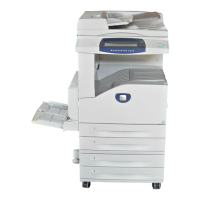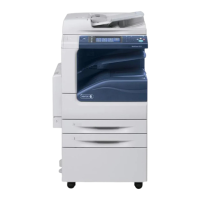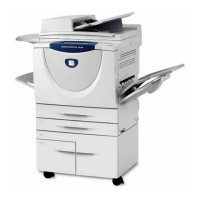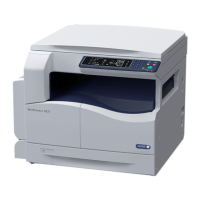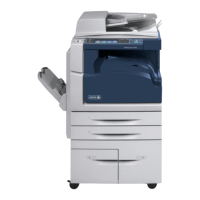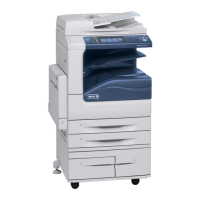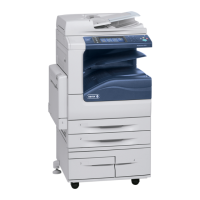Network Configuration
WorkCentre™ 5735/5740/5745/5755/5765/5775/5790
System Administrator Guide
112
Raw TCP/IP Printing
Note: TCP/IP must be enabled before Raw TCP/IP Printing is enabled.
Raw TCP/IP is a printing method used to open a TCP socket-level connection, over Port 9100, to stream
a print-ready file to the printer's input buffer, and then to close the connection after sensing an End Of
Job indicator in the Page Description Language, or after expiration of a preset timeout value. Port
9100 printing does not require a Line Printer Request (LPR) from the workstation, or the use of a Line
Printer Daemon (LPD) running on the printer. Raw TCP/IP printing is selected in Windows 2000 as the
Standard TCP/IP port.
Note: To configure this feature or these settings access the Properties tab as a System
Administrator. For details, refer to Access Internet Services as System Administrator on page 24.
1. From the Properties tab, click on the [Connectivity] link.
2. Click on the [Protocols] link.
3. Select [Raw TCP/IP Printing] in the directory tree, the Raw TCP/IP Printing page displays.
4. In the General area:
a. For Protocol, check the [Enabled] checkbox to enable Raw TCP/IP Printing.
Physical Connection displays the physical network connection, this will always display
“Ethernet”.
5. Up to three ports may be enabled and configured, in the Port Information area:
a. For Port 1 Leave the TCP Port Number set to 9100. If two additional ports are available, click
on the [Default All] button to check if they are set to 9101 and 9102 respectively (emulating
HP JetDirect EX Plus 3).
b. Leave the Bidirectional ([Enabled]) checkboxes and Maximum Connections per Port
settings at their default values.
c. Set the [End of Job Timeout] to the number of seconds to wait before processing a job
without an End Of Job indicator. The range is from 1 to 65535, and the default is 300.
d. Leave the PDL Switching ([Enabled]) checkbox at its default value.
Note: Do not check the [Enabled] checkbox for PDL Switching, when Windows clients print is
using port 9100. this prevents each print job from generating a banner page.
6. Click on the [Apply] button to accept the changes or [Undo] to return the settings to their
previous values, or [Default All] to enter printer defaults for all settings (recommended).
7. Click on the [OK] button when you see the message “Properties have been successfully
modified”.
To add additional options, from the Raw TCP/IP Printing
screen, click on the [Advanced] button.
8. In the Connections area:
a. For Maximum Concurrent Connections per Port (1-32), enter a value between 1 and 32 to
specify the maximum number of concurrent connection allowed.
b. For Maximum Concurrent Jobs per Connection (0-500), enter a value between 0 and 500 to
specify the maximum number of concurrent jobs per connection allowed.
c. For Total Job Limit per Connection (0 - 32768), enter the required job limit that can be
active per port between 1 and 32768. This setting limits the total number of jobs accepted on
a single connection. After the limit is reached and all jobs complete printing, port 9100 loses
the connection.

